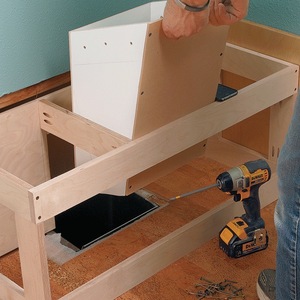I recently bought a 1975 MidCentury Modern house and I’m trying to make sense of the roof framing, which is unlike anything I’ve seen before. The interior ceiling is pine tongue and groove, and it turns out to be structural? It seems the builder erected a frame with thick (3 1/2″ x 7″) rafters (that double as interior beams), then attached a beefy (1 1/2″ thick) tongue and groove ceiling, then 1 ” of rigid foam insulation, then roll asphalt roofing. (See photo with profile and view after skylight removed.) A few questions:
1. Is this structurally sound? The interior beams are as wide as 6 feet oc, which seems crazy to me, but it seems solid after 50 years so who am I to judge? Perhaps this was a technique used back in the 70s?
2. How can I estimate the R-value of the foam? The prior owner said the insulation was crap, so I want to improve it before replacing the roof.
3. Would any of this pass a building inspection today?
4. I’m planning to use Zip Systems R sheathing right over the existing foam, in a width to be determined based on R-value. The manufacturer says the sheathing can be installed over existing sheathing. Can I put it right over the foam?
Your assistance is appreciated.




















Replies
My mother's 1967 A frame house is framed in a similar fashion. 4x10 rafters covered by 2x6 T&G decking with 2 in. wood-fiber insulation then the roofing.
The onbly way to know if the roof framing and sheathing is adequate is to have it reviewed by an engineer. My guess is that though the framing and decking is outside of the prescriptive code tables it's probably fine.
As far as insulation goes - it's hard to know what the R value of the existing is without sampling a piece. It may be an old polyiso or urea formaldahyde foam. I'm not sure what the aged value of those are but you can search the web for an idea. And I'd add rigid insulation as thick as you want and then apply either 2X's over the top with structural panels applied to the 2X's or screw the sheathing through the foam and into the rafters beneath.
I don't think Huber allows Zip-R sheathing to be used on a roof.
Thanks for the reply. A couple follow-up questions:
If I understand your recommendation correctly, I put down rigid foam, then sheathing either screwed into the rafters or sitting on a 2X frame that is attached to the rafters.
I suppose the air gap with the with the 2X approach would further add to the insulating qualities, but would it also require a vent? The roof is obviously unvented currently.
One other concern is that 2 inches of foam plus 1 1/2 inches of framing plus 1/2 inch of sheathing means I'm adding 4 inches of depth onto the roof. That will require new soffit / fascia, but I suppose I'd have to deal with that anyway.
Since the sheathing on top of the insulation is not structural, can I get away something thinner than 1/2"?
Thanks again for your assistance. You and Fine Homebuilding are a tremendous resource.
Your understanding of what I wrote is correct. You can basically add as little or much insulation as you like over the existing roof.
Yes, if you screw 2x3s or 2x4s over the foam and into the rafters they will create a space for ventilation air to flow. You can install them into the rafters/beams at 6 ft apart and then install additional ones vertically that are screwed just into the 2x6 planks at a frequency of 12 in., 16 in, or 24 in on center - that way the sheathing will have adequate support.
The minimum thickness of roof sheathing is based on the minimum required for the roof covering you intend to install. If you were installing metal you might be able to get away with 1x3s screwed horizontally across the roof (perpendicular to the metal panels). For asphalt roof shingles the minimum is 3/8 in. sheathing over rafters spaced 24 in. apart.
So option 1 - sheathing directly over the foam - I recommend using 7/16 in. OSB or 15/32 in. (half inch) plywood at a minimum that is screwed directly to the rafters and into the 2x6 roof planks along 16 in. rows vertically. - edge, 16 in, 32 in, 48 in, 64 in, 72 in (to hit the rafter/beam) then 80 in. and 96 in. - then next sheet. YOu could also space rows of screws at 12 in. centers and end up with the rows evenly spaced while incorporating the rafter/beams at 6 ft centers.
Option 2 - apply 2x3 or 2x4s spaced 12 in, or 16 in apart vertically with some screwed into the rafter/beams but most screwed just into the 2x6 planking. The apply the sheathing over the top.
If you increas the sheathing thickness to 5/8 in. then you could space the 2x3 or 2x4s to 24 in. apart.
The screws driven into the 2x6 planks only need to penetrate 1 in.
Yes - you'lll have to mess with the rakes and fascias - the more insulation you install, the wider those trim boards will need to be. If you decide to apply the 2x3 or 2x4s and want to have an intake vent along the fascia - a simple solution is venting drip edge. It will avoid the need to deal with soffit venting if there are presently soffits there now.
Excellent advice - I don't want to press my luck here, but another follow up question:
I met my roofer today and he introduced a new consideration. The roof is currently a 2/12 pitch and I was planning to put 3- tab asphalt on it, but my roofer said he won't do it on a pitch less than 3/12 (which apparently is also the National Roofing Contractors Association guidance.) So if I have to re-sheath the roof anyway, I'm thinking I should raise the pitch to 3/12. This will involve something approaching 2 feet higher at the ridge. Can I assume the sheathing / framing spacing you describe is the same, just with a sort of graduated knee wall up to the ridge? I can then use a conventional ridge vent and will do some research on your idea of a vented drip edge.
Appreciate the advice.
You might be better off with a flat roofing product. Not the stuff in your photos, but a more modern version. Insulation panels sold for this purpose can be found that do not require a decking layer above, but are designed for adhered roll roofing. There are several options, but if you are contemplating a professional roof install, materials familiar to a local installer will be the best bet.
Changing the slope of the roof will mean more structural weight, and increase the value of the advice to get an engineer to examine the existing structure and approve the modification you have in mind.
You could also purchase and install scissor trusses designed for the slopes and span, and install them, with the sheathing on top. this would also increase the options for insulation.
Thanks for the recommendation. Upon further review, I am leaning towards your advice of not changing the pitch. There are a number of issues I hadn't considered, one of which is adding 2 feet on the ridge at the gable end (front) of the house will completely change the look and I'm a fan of the low-slung MidCentury look. Weight and cost are also an issue. If you have any specific manufacturers / products I should consider please let me know. Otherwise I'm going to have to expand my list of roofing contractors. Appreciate the advice.
I do not have a specific product to recommend, but you might get good info by looking for a roofing supply place near you.
They should be able to provide a couple alternatives for materials. Might also be able to recommend a contractor that does a lot of low slope roof replacement.